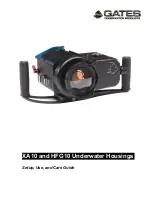
Preparing for Use
R&S
®
NRP Series
11
Getting Started 1419.0170.02 ─ 12
on the power sensor, observe the information on appropriate operating conditions
provided in the basic safety instructions and the data sheet of the power sensor.
In particular, ensure the following:
●
The power sensor is dry and shows no sign of condensation.
●
The ambient temperature does not exceed the range specified in the data
sheet.
●
Signal levels at the input connectors are all within the specified ranges.
●
Signal outputs are connected correctly and are not overloaded.
4.3
Considerations for Test Setup
Handling the R&S NRP33SN-V power sensor
Risk of contamination
Always wear clean protective gloves when handling the R&S NRP33SN-V
vacuum power sensors to protect the device and its environment from con-
tamination.
Recommended bake-out procedure
When the sensor is inserted in a vacuum chamber, perform vacuum baking
for 100 hours at 85°C at a pressure lower than 10
-5
mbar.
Preventing electrostatic discharge (ESD)
ESD is most likely to occur when you connect or disconnect a DUT.
►
NOTICE!
Risk of electrostatic discharge (ESD). Electrostatic discharge (ESD)
can damage the electronic components of the power sensor and the device
under test (DUT).
Ground yourself to avoid electrostatic discharge (ESD) damage:
● Using a wrist strap and cord, connect yourself to the ground.
● Use a conductive floor mat and heel strap combination.
Considerations for Test Setup












































